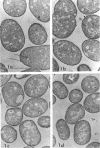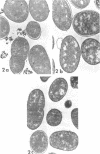Abstract
Azotobacter vinelandii was grown on N2, NH4+, or NO3−, and an internal membrane network was observed by electron microscopy of thin sections of cells. Cells obtained in early exponential growth contained less internal membrane than did cells from cultures in late exponential growth. It seems likely that O2 has a role in regulating the amount of internal membrane structure.
Full text
PDF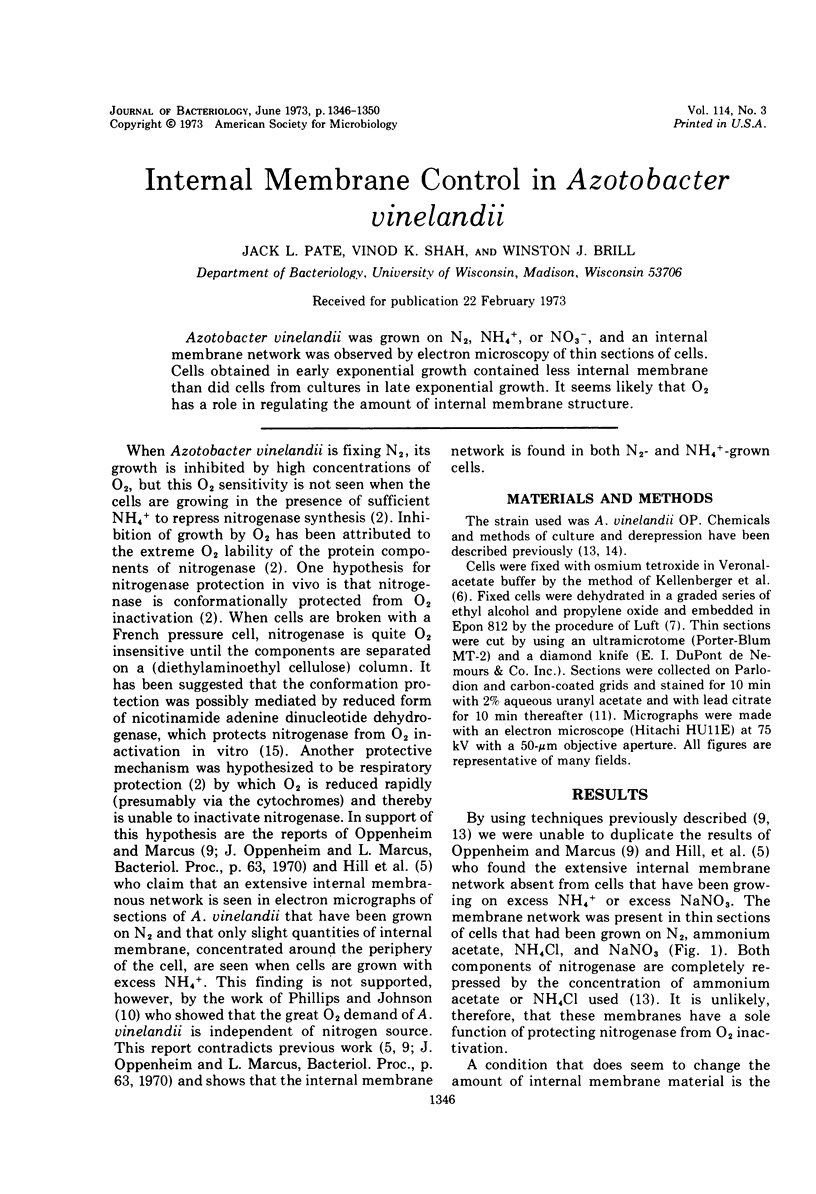
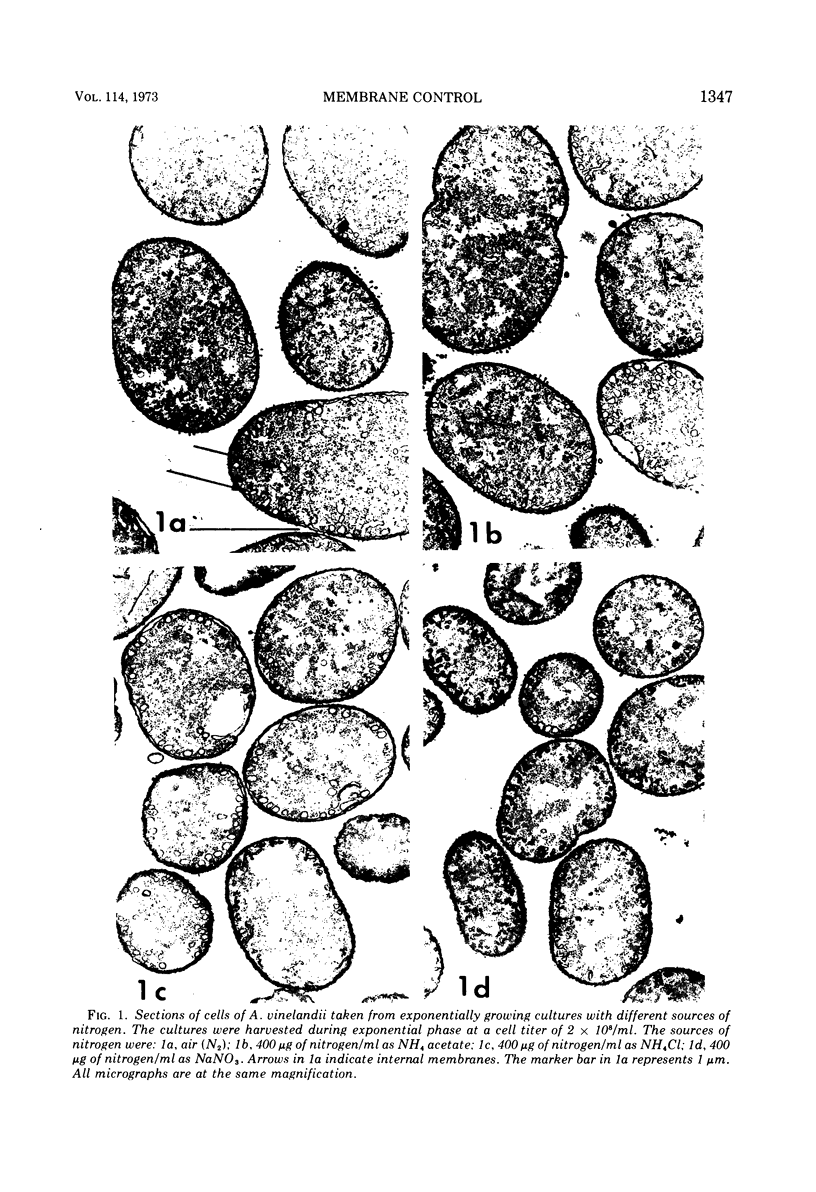
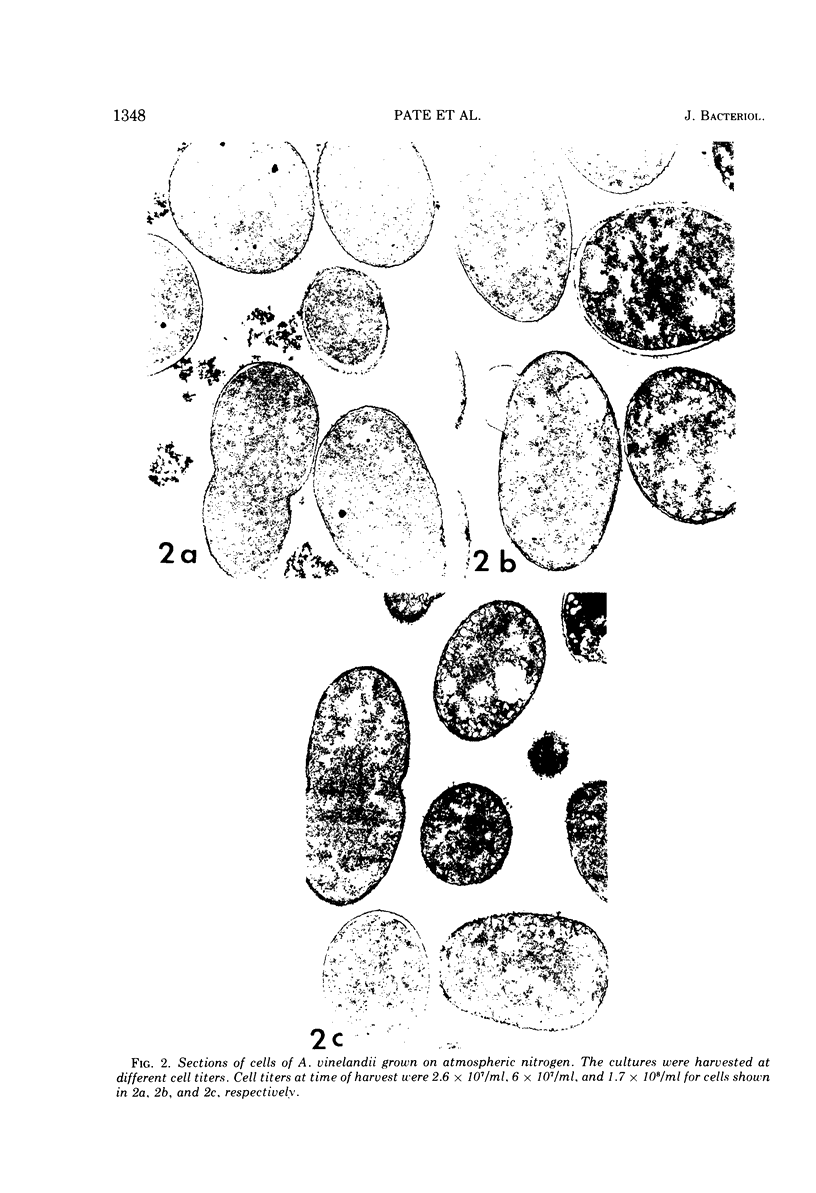
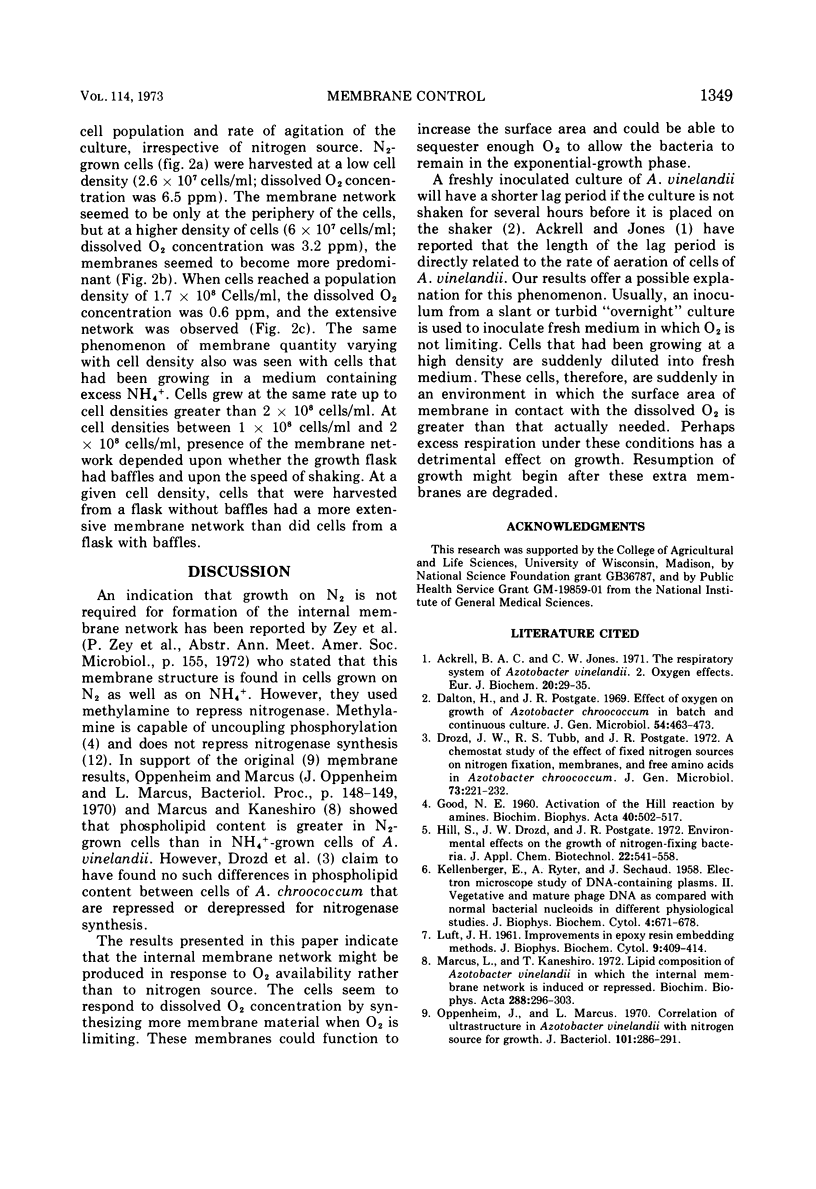

Images in this article
Selected References
These references are in PubMed. This may not be the complete list of references from this article.
- Ackrell B. A., Jones C. W. The respiratory system of Azotobacter vinelandii. 2. Oxygen effects. Eur J Biochem. 1971 May 11;20(1):29–35. doi: 10.1111/j.1432-1033.1971.tb01358.x. [DOI] [PubMed] [Google Scholar]
- Dalton H., Postgate J. R. Effect of oxygen on growth of Azotobacter chroococcum in batch and continuous cultures. J Gen Microbiol. 1968 Dec;54(3):463–473. doi: 10.1099/00221287-54-3-463. [DOI] [PubMed] [Google Scholar]
- Drozd J. W., Tubb R. S., Postgate J. R. A chemostat study of the effect of fixed nitrogen sources on nitrogen fixation, membranes and free amino acids in Azotobacter chroococcum. J Gen Microbiol. 1972 Nov;73(2):221–232. doi: 10.1099/00221287-73-2-221. [DOI] [PubMed] [Google Scholar]
- GOOD N. E. Activation of the Hill reaction by amines. Biochim Biophys Acta. 1960 Jun 3;40:502–517. doi: 10.1016/0006-3002(60)91391-3. [DOI] [PubMed] [Google Scholar]
- KELLENBERGER E., RYTER A., SECHAUD J. Electron microscope study of DNA-containing plasms. II. Vegetative and mature phage DNA as compared with normal bacterial nucleoids in different physiological states. J Biophys Biochem Cytol. 1958 Nov 25;4(6):671–678. doi: 10.1083/jcb.4.6.671. [DOI] [PMC free article] [PubMed] [Google Scholar]
- LUFT J. H. Improvements in epoxy resin embedding methods. J Biophys Biochem Cytol. 1961 Feb;9:409–414. doi: 10.1083/jcb.9.2.409. [DOI] [PMC free article] [PubMed] [Google Scholar]
- Marcus L., Kaneshiro T. Lipid composition of Azotobactervinelandii in which the internal membrane network is induced or repressed. Biochim Biophys Acta. 1972 Nov 2;288(2):296–303. doi: 10.1016/0005-2736(72)90250-7. [DOI] [PubMed] [Google Scholar]
- Oppenheim J., Marcus L. Correlation of ultrastructure in Azotobacter vinelandii with nitrogen source for growth. J Bacteriol. 1970 Jan;101(1):286–291. doi: 10.1128/jb.101.1.286-291.1970. [DOI] [PMC free article] [PubMed] [Google Scholar]
- REYNOLDS E. S. The use of lead citrate at high pH as an electron-opaque stain in electron microscopy. J Cell Biol. 1963 Apr;17:208–212. doi: 10.1083/jcb.17.1.208. [DOI] [PMC free article] [PubMed] [Google Scholar]
- Shah V. K., Davis I. C., Gordon J. K., Orme-Johnson W. H., Brill W. J. Nitrogenase. 3. Nitrogenaseless mutants of Azotobacter vinelandii: activities, cross-reactions and EPR spectra. Biochim Biophys Acta. 1973 Jan 18;292(1):246–255. doi: 10.1016/0005-2728(73)90269-7. [DOI] [PubMed] [Google Scholar]
- Shah V. K., Davis L. C., Brill W. J. Nitrogenase. I. Repression and derepression of the iron-molybdenum and iron proteins of nitrogenase in Azotobacter vinelandii. Biochim Biophys Acta. 1972 Feb 28;256(2):498–511. doi: 10.1016/0005-2728(72)90078-3. [DOI] [PubMed] [Google Scholar]
- St John R. T., Brill W. J. Inhibitory effect of methylalanine on glucose-grown Azotobacter vinelandii. Biochim Biophys Acta. 1972 Jan 28;261(1):63–69. doi: 10.1016/0304-4165(72)90314-5. [DOI] [PubMed] [Google Scholar]
- Yates M. G. Effect of non-haem iron proteins and cytochrome C from Azotobacter upon the activity and oxygen sensitivity of Azobacter nitrogenase. FEBS Lett. 1970 Jun 27;8(5):281–285. doi: 10.1016/0014-5793(70)80287-3. [DOI] [PubMed] [Google Scholar]



